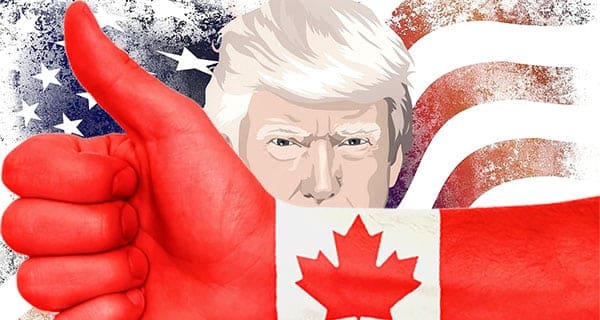Trump blends right- and left-wing policies, making him unpredictable and frustrating to both ideological camps

For interview requests, click here
Donald Trump famously rode his golden escalator in Trump Tower in New York City on June 16, 2015, to announce his candidacy for the Republican Party presidential primaries.
At the time, most columnists and political observers thought it was nothing more than a publicity stunt. They believed the billionaire businessman and reality TV star would stay in the race for either a couple of months or a primary or two. He would get some media attention, enjoy the spotlight—and return to his (very public) private life.
A decade has nearly passed since that memorable escalator ride. Trump was elected president in 2016, lost in 2020 and won again in 2024. Here’s the fascinating part: many of the same columnists and political commentators who predicted his early political demise still don’t understand Trump’s popular appeal or leadership style.
In fairness, it took me a few months to figure things out. After watching the evolution of his political trajectory, I started to realize there’s a method to his madness (so to speak).
 Donald Trump plays the media like a fiddle. |
| Recommended |
| Fentanyl and border security are a smokescreen; Trump’s trade war is about power
|
| Donald Trump and the political legacy he hopes to leave behind
|
| As Trump looms, Canada will be tested as never before
|
Trump is an unconventional politician. He doesn’t use the same playbook that most mainstream politicians have followed for generations. He’s a political outsider who unexpectedly found himself on the inside. He’s not an ideologue in political or philosophical terms. He’s neither a conservative nor a Republican in the traditional or modern sense. He uses straightforward language and makes controversial comments, often in the same breath. He occasionally takes strong policy positions but has no issues shifting if the political winds start blowing in different directions.
His critics were (and still are) furious about his support for ethnoculturalism and economic nationalism. They’ve called him a “racist,” “fascist,” “bully” and a “dictator.” That’s not even close to the majority opinion, however. Trump has gradually acquired the broad support of Americans from all walks of life. They view him as a man of the people. They like his straight-talking, no-nonsense approach to politics, the media and life in general. They appreciate that he’s consistently defended the forgotten men and women—and wants to drain the swamp in Washington once more.
Trump’s initial electoral success was seen as part of the global populist wave that encompassed Brexit in the U.K., Italy’s Five Star Movement and so forth. However, it turned out to be much more than this. His ability to mix right-leaning positions (lower taxes, nominating Republican-leaning Supreme Court judges) with left-leaning positions (protectionism, free trade skepticism) meant he could build and destroy bridges almost at will.
“The U.S. President is, therefore, closer to a political chameleon,” I wrote in the UK-based The Article on Jan. 28, 2019. “He refuses to let modern political ideology define his ideas, policies and presidency. He adeptly uses social media to create trial balloons that ultimately help shape the White House’s position on issues like the partial government shutdown, building a border security wall with Mexico, and building relations with communist North Korea. He can frustrate the political right and political left on the same issue for different reasons, and still receive the same reaction that he publicly or privately craves.”
Trump’s mindset, in effect, is remarkably similar to the average American mindset. While it’s been most successful among Republican voters, it has the ability to cross party and ideological lines and attract Democrats and Independents.
The president’s recent tariff tussle with Canada and Mexico, which led to 30-day reprieves for both countries, can be used as a case study.
Most ideological conservatives and libertarians in the Republican Party, as well as right-leaning independents, are opposed to the protectionist nature of tariffs. The disastrous effects of the 1930 Smoot-Hawley Tariff Act haven’t been forgotten. But as a bargaining chip to improve America’s economic status, they can at least understand Trump’s logic, even if they disagree with him.
What about the political left? Most centrist and business-oriented Democrats don’t support tariffs, but as last year’s U.S. presidential election showed, ideological liberals and other progressives tend to be onside. Left-leaning Americans in Democratic-controlled states may also see the logic in Trump’s tariff strategy.
Business leaders are naturally opposed to tariffs, but small business owners and the middle class may see the economic benefits of more money returning to America’s coffers in this fashion. The America First principle that Trump supports also fits within his tariff-based strategy. Rural and urban communities may also side with his position that Canada and Mexico must stop taking advantage of their political and economic relationship with the U.S.
Many columnists and political commentators (mostly on the left but some on the right) have been unable to piece all this together. I doubt they’ve even tried.
Why? They can’t remove themselves from the ideological prisms they exist in. They live in political bubbles of self-importance where their families, friends and colleagues mostly feel the same way they do about Trump’s ideas and policies. If everyone they know thinks like this, then everyone else must naturally feel the same way.
Except they don’t.
These columnists and political commentators stubbornly refuse to accept what has been blindingly obvious about Trump’s political success. They’re not going to change their tune anytime soon, and he’ll keep playing them like a fiddle until his second presidential term has concluded.
Michael Taube is a political commentator, Troy Media syndicated columnist and former speechwriter for Prime Minister Stephen Harper. He holds a master’s degree in comparative politics from the London School of Economics, lending academic rigour to his political insights.
Explore more on Donald Trump, Trump administration, News media
Troy Media is dedicated to empowering Canadian community news outlets by providing independent, insightful analysis and commentary. Our mission is to support local media in fostering an informed and engaged public by delivering reliable content that strengthens community connections, enriches national conversations, and helps Canadians better understand one another.
